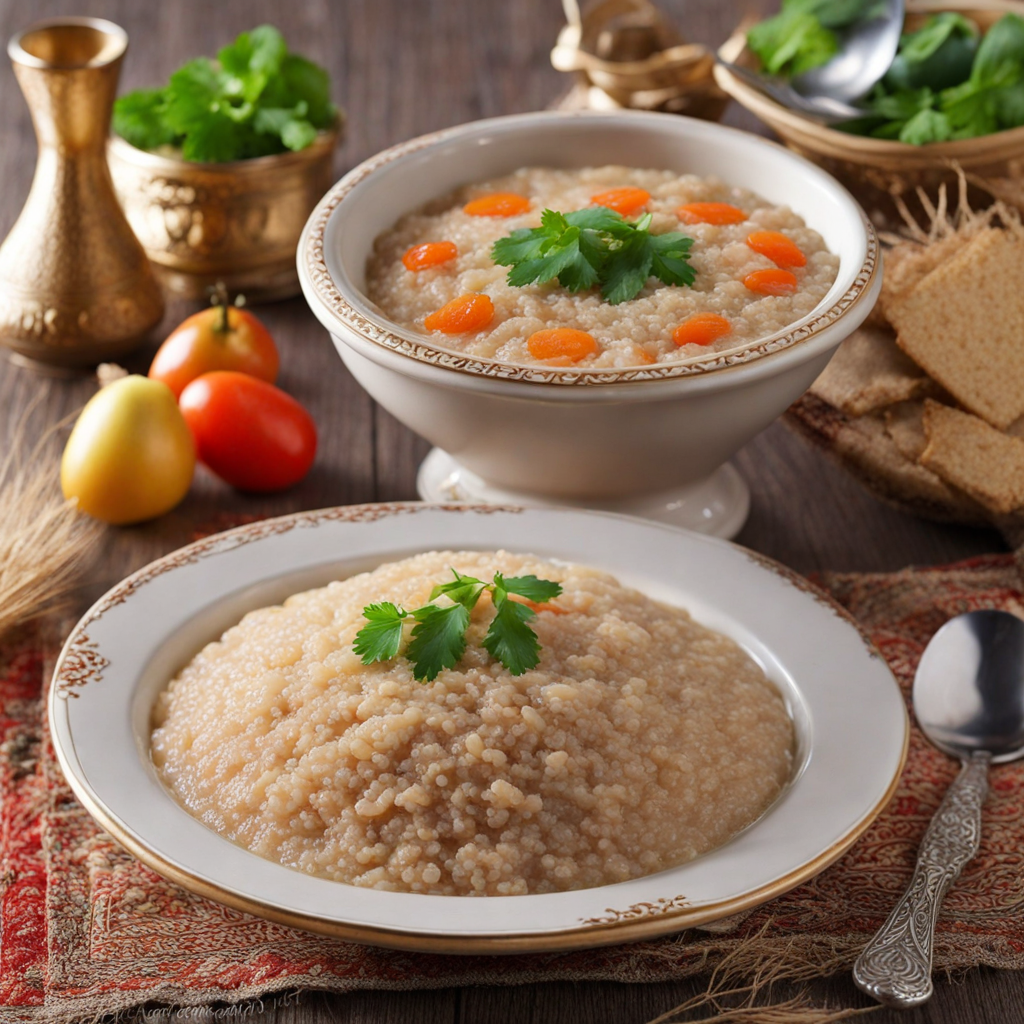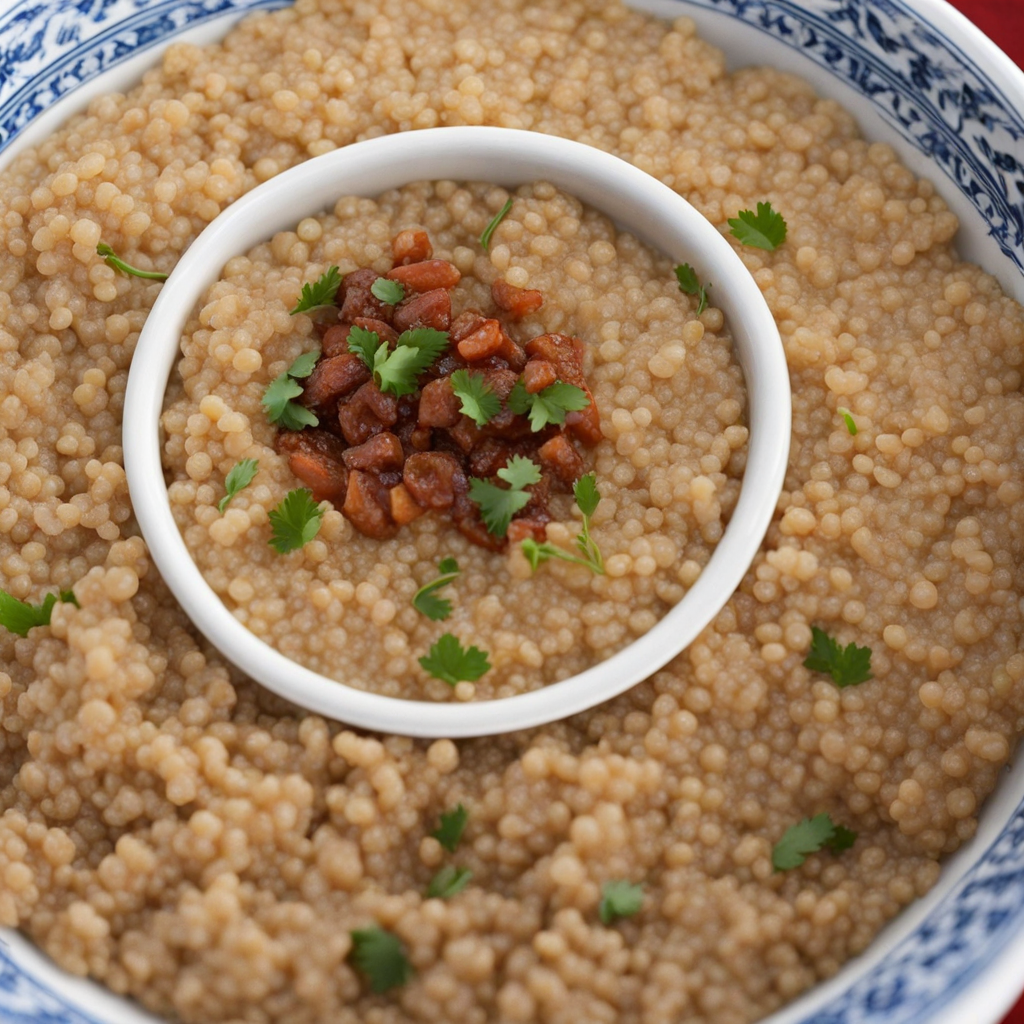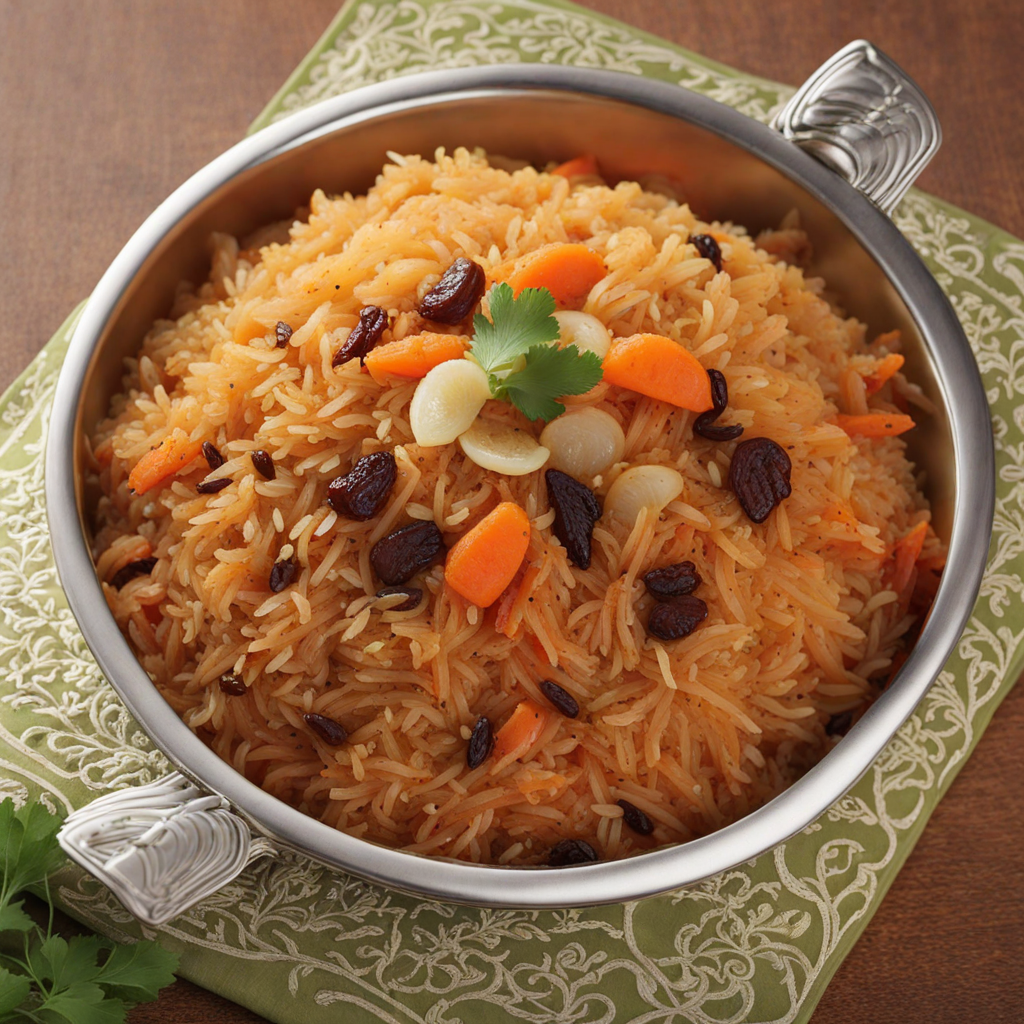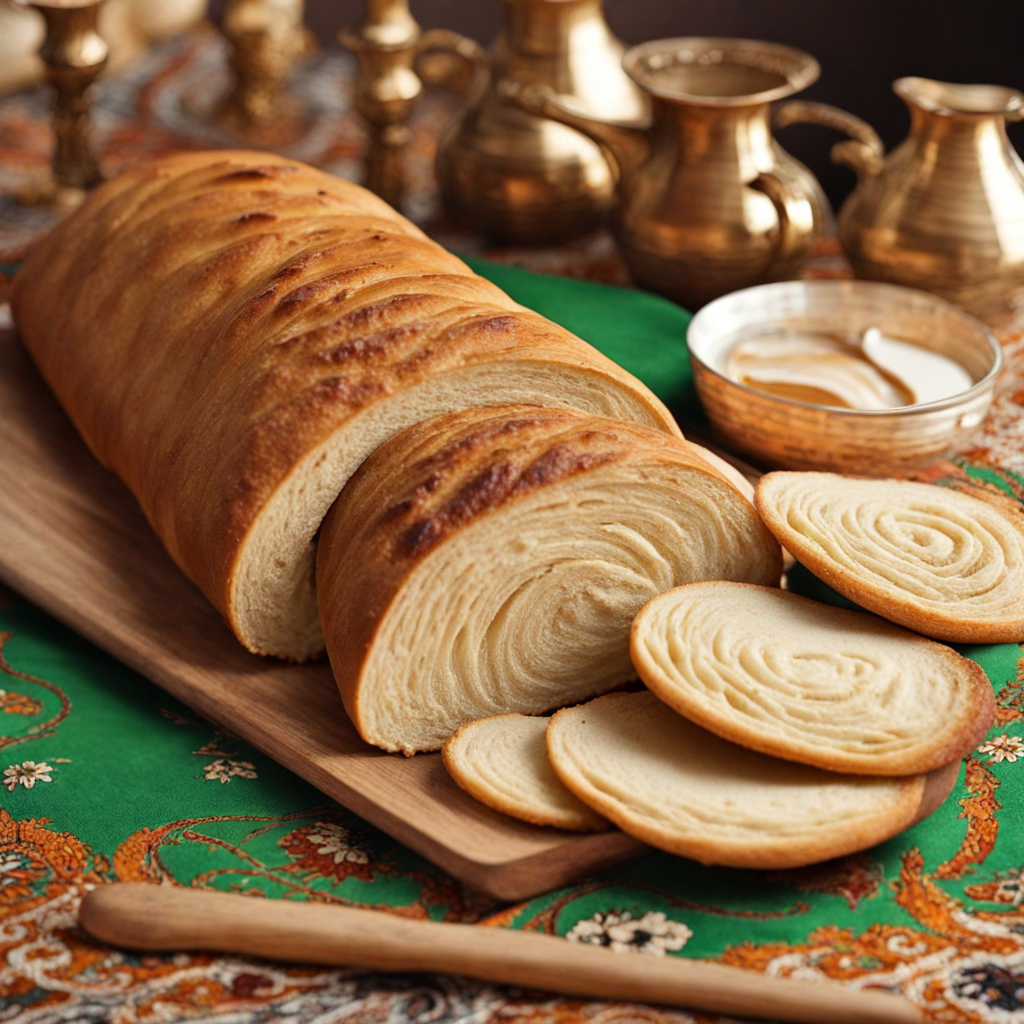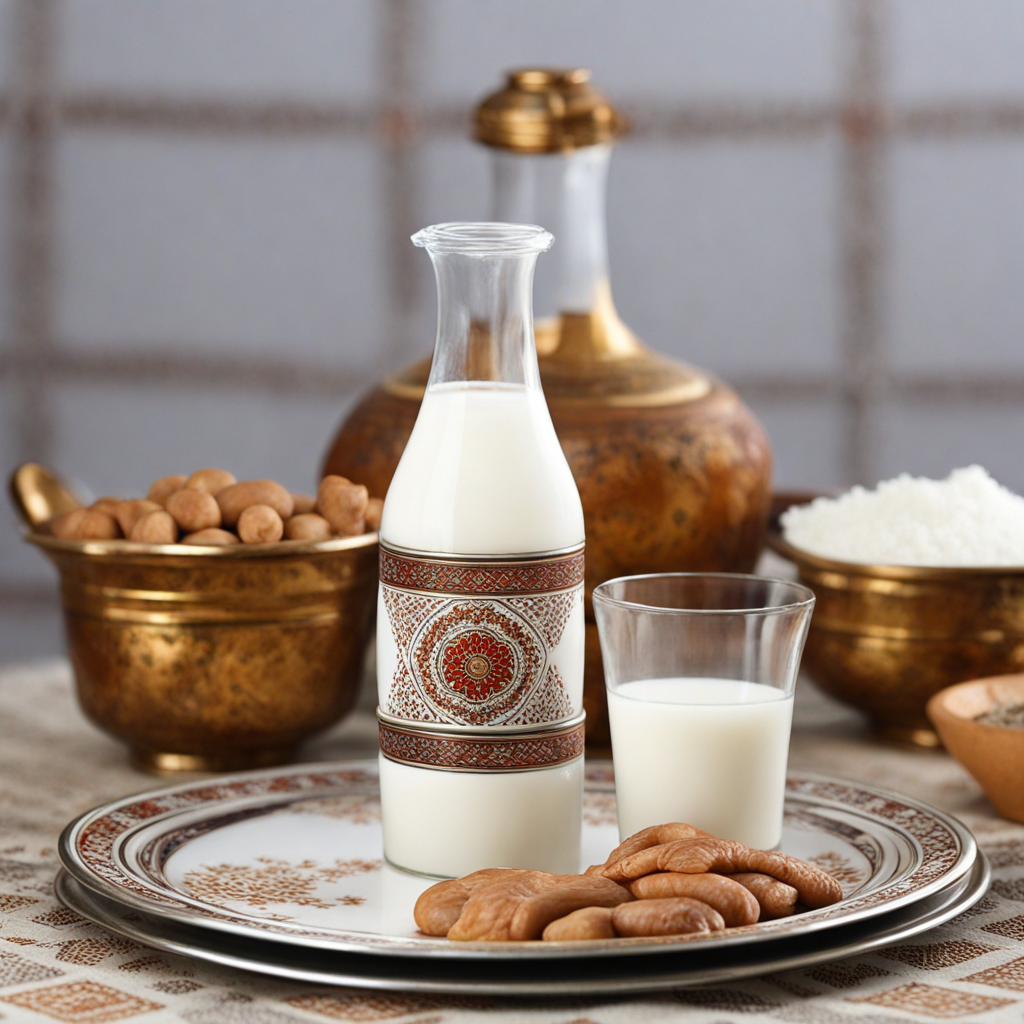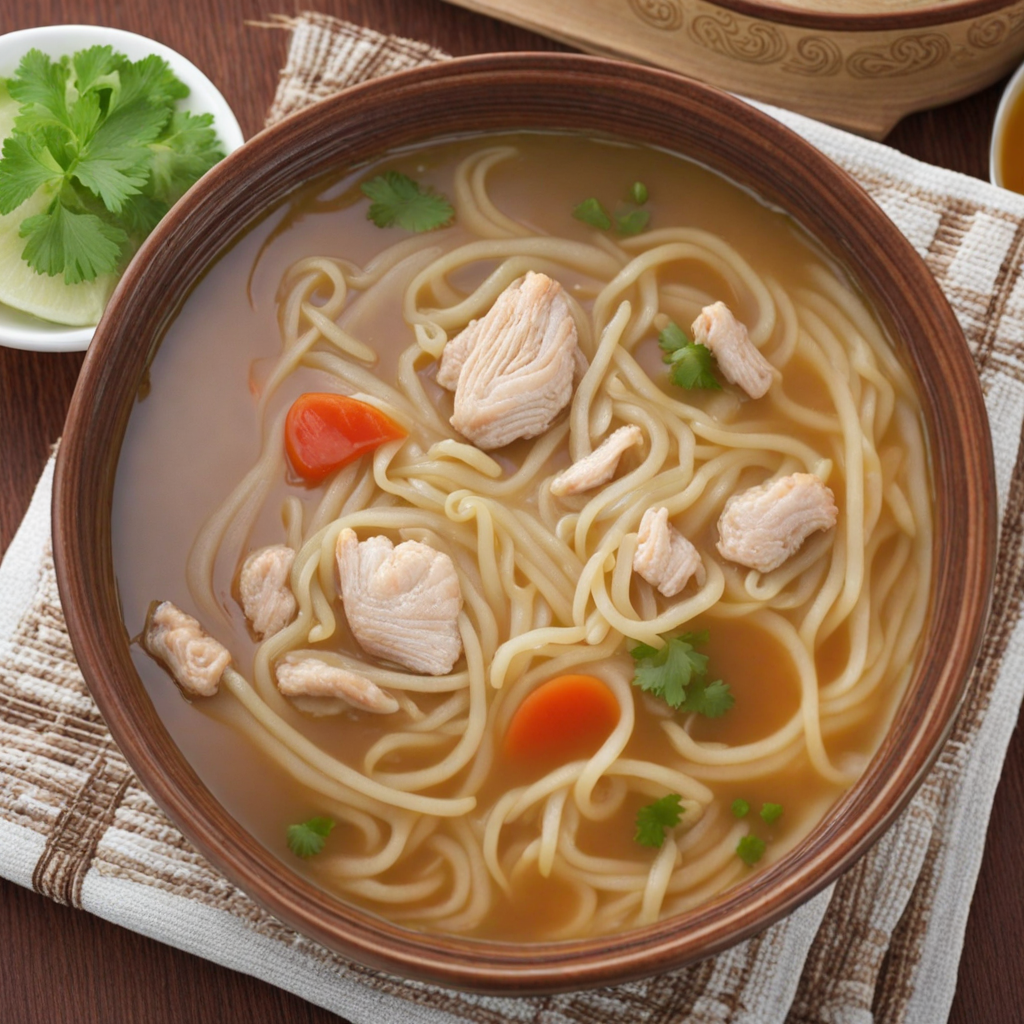Yarma
Yarma, a traditional dish from Turkmenistan, is a delightful culinary experience that showcases the country’s rich agricultural heritage. At its core, Yarma consists of cracked wheat, often referred to as bulgur, which is a staple in many Central Asian cuisines. The wheat is typically toasted to enhance its nutty flavor before being simmered, resulting in a hearty and wholesome base. The texture is slightly chewy, providing a satisfying bite that pairs well with a variety of accompaniments. To elevate the taste of Yarma, it is commonly enriched with aromatic herbs and spices, such as cumin and coriander, along with sautéed onions and garlic, which infuse the dish with warmth and depth. Vegetables such as carrots and bell peppers can also be incorporated, adding a vibrant color and sweetness to the mix. For those seeking protein, Yarma is often served with tender pieces of meat, such as lamb or chicken, making it a filling and balanced meal that is perfect for gatherings and family celebrations. What sets Yarma apart is its versatility; it can be enjoyed as a main course or as a side dish alongside grilled meats and fresh salads. The rustic charm of this dish is amplified when served in a communal style, allowing diners to share and savor the flavors together. With its wholesome ingredients and comforting essence, Yarma invites food lovers to explore the unique culinary landscape of Turkmenistan, offering a taste of tradition that resonates with both the palate and the heart.
How It Became This Dish
The History of 'Ярма' (Yarma): A Culinary Gem of Turkmenistan Origin and Ingredients Yarma, a traditional dish from Turkmenistan, holds a cherished place in the heart of Central Asian cuisine. Its name derives from the Persian word "yarma," meaning "crushed" or "broken," which aptly describes its primary ingredient—cracked wheat or bulgur. This ancient grain has been a staple in the diets of various cultures throughout history, prized for its nutritional value and versatility. The origins of yarma can be traced back to the nomadic tribes of the region, who cultivated and utilized grains as a fundamental aspect of their sustenance. The basic preparation of yarma involves soaking cracked wheat before cooking it with water, meat (often lamb or beef), onions, and a variety of spices such as cumin and black pepper. The dish is often enriched with the addition of vegetables like carrots and potatoes, and sometimes even dried fruits, which add layers of flavor and texture. Through the years, variations have emerged, reflecting the diverse culinary practices across Turkmenistan and neighboring countries. Cultural Significance Yarma is more than just food; it represents a cultural artifact deeply embedded in Turkmen identity. For centuries, it has been a symbol of hospitality and communal sharing. Traditionally prepared during significant occasions—such as weddings, religious holidays, and family gatherings—yarma embodies the spirit of togetherness and celebration. Serving yarma to guests is a gesture of goodwill, signifying respect and honor. The Turkmen people, known for their rich oral traditions, often recount stories and legends associated with yarma. It is said that the dish was a staple for ancient nomadic tribes, providing sustenance during long journeys across the harsh landscapes of the steppes. The preparation of yarma often involved the entire family or community, transforming the cooking process into a communal event where stories, laughter, and traditions were shared. In Turkmen culture, food plays a pivotal role in rituals and customs. Yarma is often featured in the offerings made to ancestors and in the preparation of festive meals during the Novruz celebration, marking the Persian New Year. This time-honored dish serves as a reminder of the Turkmenistan’s agricultural roots and the importance of community bonds. Development Over Time As Turkmenistan underwent social and political transformations, so too did its culinary landscape. The Soviet era brought significant changes to food production and consumption patterns. While traditional dishes like yarma remained popular, the availability of ingredients and cooking methods began to evolve. The emphasis on collectivization in agriculture meant that certain grains and staples were mass-produced, leading to variations in the quality and flavor of yarma. In the post-Soviet period, as Turkmenistan regained its independence in 1991, there was a renewed interest in preserving cultural heritage, including culinary traditions. Chefs and home cooks alike began to explore and revive traditional recipes, emphasizing the importance of local ingredients and authentic cooking methods. Community cookbooks emerged, documenting the recipes passed down through generations, ensuring that the art of making yarma was not lost to modernization. As Turkmenistan has become increasingly integrated into global culinary trends, yarma has gained attention beyond its borders. Chefs in urban centers began experimenting with the dish, incorporating international flavors and techniques while maintaining the essence of the traditional recipe. This fusion has created a new wave of culinary appreciation for yarma, showcasing its adaptability and timelessness. Contemporary Interpretations In recent years, yarma has found its way into the menus of restaurants that specialize in Central Asian cuisine, both in Turkmenistan and abroad. Contemporary chefs have embraced its versatility, offering variations that cater to different dietary preferences. For instance, vegetarian and vegan interpretations of yarma have emerged, replacing meat with legumes or tofu while still preserving the dish's fundamental character. Moreover, the rise of food tourism in Turkmenistan has brought attention to traditional dishes like yarma. Travelers seeking authentic culinary experiences are drawn to local markets, where they can witness the preparation of yarma and engage with the culture surrounding it. Cooking classes and culinary tours have become popular, allowing visitors to learn the art of making yarma while gaining insight into the rich agricultural practices of the region. Conclusion Yarma stands as a testament to the resilience of Turkmen culinary traditions, reflecting the rich history, cultural significance, and evolving nature of food in Turkmenistan. From its humble beginnings among nomadic tribes to its recognition on the global culinary stage, yarma is more than just a dish; it is a narrative woven into the fabric of Turkmen identity. As the world continues to embrace diverse culinary heritages, yarma serves as a reminder of the power of food to connect people, preserve traditions, and foster community. Through the lens of this beloved dish, we not only taste the flavors of Turkmenistan but also experience the warmth of its culture and the enduring spirit of its people. The journey of yarma is a celebration of history, heritage, and the universal language of food that transcends borders and generations.
You may like
Discover local flavors from Turkmenistan


